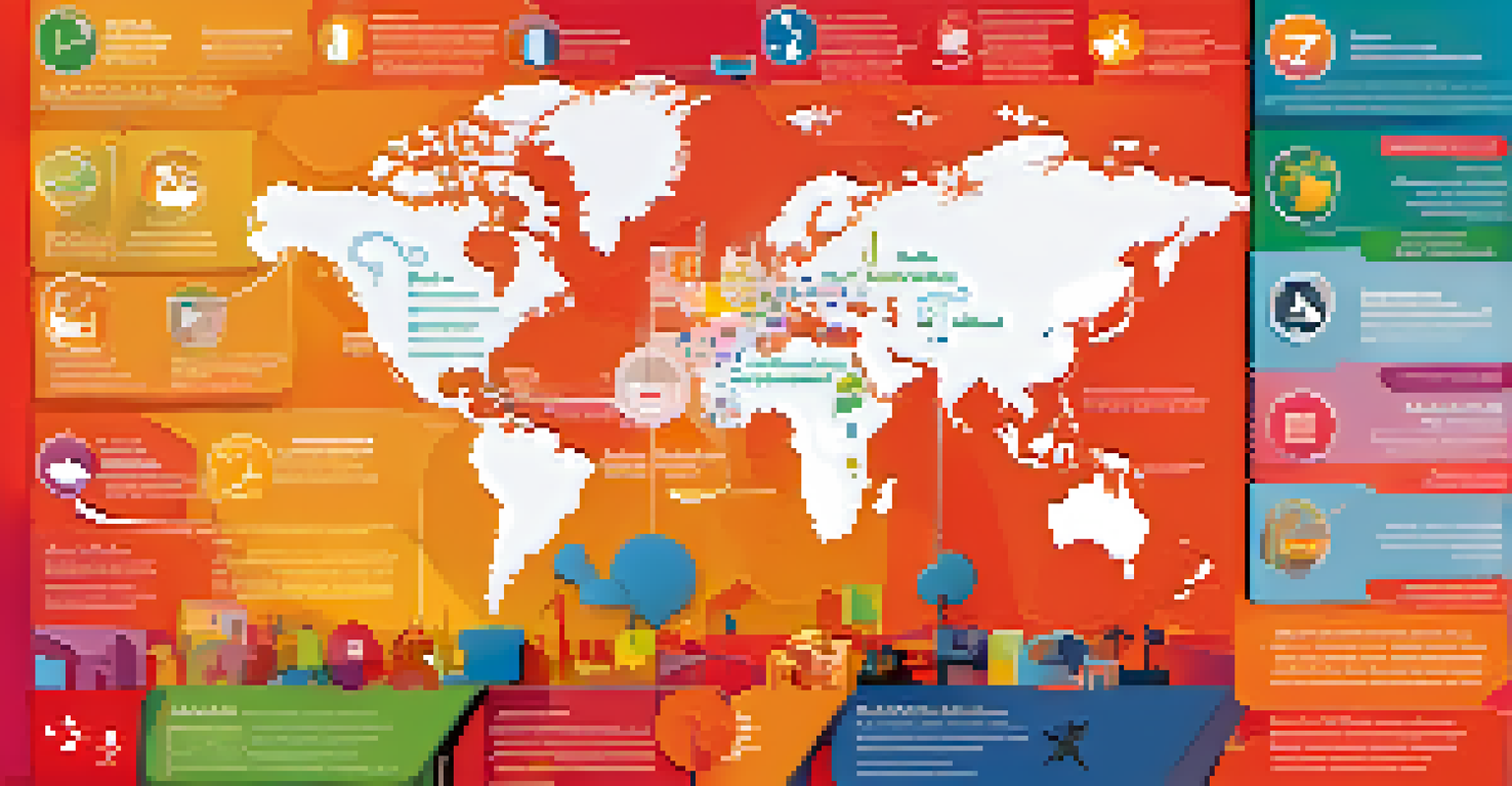Cross-Cultural Communication Skills for Global Careers

Understanding the Importance of Cross-Cultural Skills
In today's interconnected world, understanding cultural differences is crucial for professional success. As businesses expand globally, the ability to communicate effectively across cultures can set you apart. Companies value employees who can navigate diverse environments, enhancing collaboration and innovation.
The single biggest problem in communication is the illusion that it has taken place.
Cross-cultural communication skills enable you to bridge gaps between varying worldviews, making interactions smoother and more productive. Consider a workplace where team members hail from different countries; their varying approaches can lead to misunderstandings if not addressed. Embracing cultural diversity can foster creativity and drive success.
Moreover, these skills are not only beneficial in a professional context but also enrich your personal life. Navigating cultural nuances can enhance relationships and expand your worldview, providing you with a more rounded perspective on life. In essence, mastering these skills is an investment in both your career and personal growth.
Key Components of Effective Cross-Cultural Communication
Effective cross-cultural communication hinges on several key components: awareness, empathy, and adaptability. Awareness involves recognizing your own cultural biases and understanding how they shape your perceptions. This self-awareness allows you to approach conversations with an open mind, which is essential when engaging with diverse cultures.

Empathy plays a significant role in bridging cultural divides. It involves putting yourself in someone else's shoes and understanding their feelings and perspectives. By fostering empathy, you create an environment where others feel valued and understood, leading to more meaningful interactions.
Cultural Skills Boost Career Success
Mastering cross-cultural communication is essential for professional growth and enhances collaboration in diverse workplaces.
Lastly, adaptability is crucial in cross-cultural settings. Each culture has its own communication style, and being flexible enough to adjust your approach can make a significant difference. Whether it’s adapting your tone, body language, or even the medium of communication, being willing to change ensures that your message is conveyed effectively.
Cultural Awareness: Recognizing Your Own Biases
Cultural awareness starts with recognizing your own biases and assumptions. Everyone carries their own cultural lens, shaped by their upbringing and experiences. By taking the time to reflect on your biases, you can better understand how they influence your interactions with others.
We are all different. Don’t judge, understand instead.
For example, if you grew up in a culture that values direct communication, you might find it challenging to engage with someone from a culture that values indirect communication. Recognizing this difference is the first step toward effective dialogue. It prompts you to ask questions rather than make assumptions.
Engaging in self-reflection can lead to personal growth and enhanced communication skills. Consider journaling or discussing these biases with a trusted friend or mentor. The more you understand yourself, the better equipped you will be to communicate with others from different backgrounds.
Building Empathy Through Active Listening
Active listening is a pivotal skill in developing empathy and enhancing cross-cultural communication. It requires you to fully engage with the speaker, showing genuine interest in their thoughts and feelings. This practice not only improves your understanding but also fosters a deeper connection with others.
When engaging with someone from a different culture, focus on what they’re saying without planning your response while they speak. This can be challenging, especially in fast-paced environments, but it’s crucial for effective communication. Reflecting back what you’ve heard can also validate their feelings and demonstrate your commitment to understanding their perspective.
Empathy Enhances Communication
Developing empathy through active listening fosters deeper connections and understanding across cultural divides.
Consider using open-ended questions to encourage dialogue. This not only shows that you're listening but also invites the other person to share more about their cultural background. By practicing active listening, you create an atmosphere of trust and respect, which is essential for successful cross-cultural interactions.
Adapting Your Communication Style for Different Cultures
Adapting your communication style is vital when interacting with individuals from different cultures. Different cultures have distinct norms regarding how information is shared, from the level of formality to the use of non-verbal cues. Being aware of these nuances can help you communicate more effectively.
For instance, in some cultures, a direct approach is preferred, while in others, a more indirect style is appreciated. Adjusting your style to align with the cultural expectations of your audience can lead to more productive and harmonious interactions. This adaptability showcases your respect for their culture and enhances your credibility.
Additionally, consider the importance of non-verbal communication, which can vary significantly across cultures. Gestures, eye contact, and even the physical distance between people can carry different meanings. Being mindful of these aspects can prevent misunderstandings and improve your overall communication effectiveness.
The Role of Technology in Cross-Cultural Communication
In our digital age, technology plays a crucial role in facilitating cross-cultural communication. Tools like video conferencing, instant messaging, and social media enable us to connect with people around the globe. However, it’s essential to be aware of the cultural implications of these technologies as well.
For example, while some cultures may prefer face-to-face interactions, others may feel comfortable communicating through emails or texts. Understanding these preferences can help you choose the right medium for your messages. Additionally, be cautious with the tone and language used in written communication, as it can easily be misinterpreted without non-verbal cues.
Adaptability is Key in Communication
Adjusting your communication style to fit cultural norms leads to more effective and harmonious interactions.
Moreover, leveraging online resources can broaden your understanding of different cultures. Platforms offering language courses, cultural training, and forums for discussion can enhance your cross-cultural skills. By embracing technology, you can enrich your global communication toolkit and enhance your effectiveness in diverse work environments.
Practical Tips for Enhancing Your Cross-Cultural Skills
Improving your cross-cultural communication skills doesn’t have to be daunting. Start by immersing yourself in diverse environments, whether through travel, volunteering, or attending cultural events. These experiences expose you to different perspectives and practices, enriching your understanding of global cultures.
Another effective strategy is to seek feedback from colleagues or friends from different backgrounds. This can provide valuable insights into how your communication is perceived and areas for improvement. Engaging in candid conversations can also help build rapport and trust.

Lastly, continue your education on cultural differences through books, documentaries, or online courses. The more knowledge you acquire, the more adept you’ll become at navigating cross-cultural interactions. Remember, practice makes perfect, and every conversation is an opportunity to refine your skills.